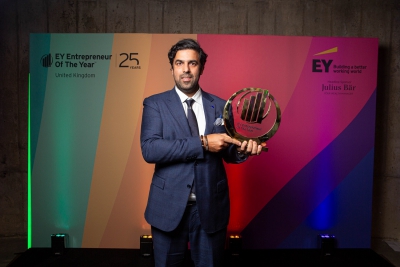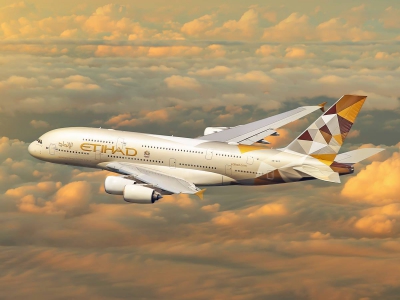Recently, a delegation composed of the Ministry of Transport of China and China Railway Group visited Brazil for a seven-day investigation and had in-depth discussions with Brazil about the "Two Oceans Railway" across the South American continent and connecting the Atlantic and Pacific Oceans.

Joao Villaverde, Institutional Coordination Secretary of the Brazilian Ministry of Planning, said:
China and Brazil discussed the large-scale infrastructure plan for the integration of Brazil and South America, including the "Two Oceans Railway" project connecting South American countries and the Peruvian port of Chancay. China expressed its willingness to technology, invest and cooperate with the project.

The "Two Oceans Railway", also called the "South American Continental Bridge", has several different routes, such as the "Argentina-Chile" route, the "Brazil-Bolivia-Peru" route, the "Brazil-Ecuador" route, the "Brazil-Colombia" route, etc.
Judging from the pictures of the on-site meeting released by Villaverde, the Brazilian Ministry of Planning, the focus of the discussions between the two parties was to compare several route plans from Brazil to Peru (Port of Chancay/Port of Paita), from Brazil to Ecuador (Port of Manta/Port of Guayaquil), and from Brazil to Colombia (Port of Tumaco).

At present, the "Brazil-Peru (Port of Chancay)" route is the most feasible.

As shown in the figure, the "Two Oceans Railway" Brazil-Peru plan starts from east to west, starting from Port Ilheus on the Atlantic coast of Brazil, westward through Figueiropolis-Mara Rosa in the central part, then crossing Lucas, along the border area between Brazil and Bolivia, northwest through the Amazon rainforest region of Brazil and Peru (Cruseiro do Sul-Pucallpa), then southwest over the Andes, passing through Huanuco and finally arriving at the Port of Chancay on the Pacific coast of Peru.
The "Two Oceans Railway" (Brazil <Porto Ilhéus>-Peru <Porto Chancay>) has a total mileage of approximately 6,500 kilometers [the Brazilian section is approximately 5,450 kilometers / the Peruvian section is approximately 1,050 kilometers], including approximately 2,600 kilometers of existing lines and approximately 3,900 kilometers of new lines. The total investment is initially estimated to be approximately US$80 billion.
Due to the obstruction of the Andes Mountains, Brazilian bulk products (such as grain/metal minerals/timber/cotton/sugar/fruit/meat) are shipped to the Asia-Pacific region via the Atlantic route. There are three main routes, as shown in the figure below:

The first is to bypass the "Cape of Good Hope-Strait of Malacca" route. Bulk products from the hinterland of Brazil are gathered at ports along the eastern coast, and then cross the Atlantic Ocean eastward, enter the Indian Ocean via the Cape of Good Hope at the southern tip of Africa, and then pass through the Strait of Malacca to reach the Asia-Pacific region. This route is long and time consuming. Currently, Brazilian bulk products are mainly exported to the Asia-Pacific region via this route.
The second is the route via the Panama Canal. Bulk products from the hinterland of Brazil are gathered at ports on the eastern coast, then go north and west through the Caribbean Sea, through the Panama Canal, and then through the Pacific route to the Asia-Pacific region. This route is relatively short, but requires high tolls from the Panama Canal Authority and often faces congestion in the canal channel.
The third is to bypass the Strait of Magellan route. Bulk products from the hinterland of Brazil are assembled at ports along the eastern coast, then go south around the Strait of Magellan and then reach the Asia-Pacific region via the Pacific route. The biggest problem with this route is that the waterway has a relatively high risk factor and is rarely used.
It can be seen that from Brazil to Asia-Pacific, the above three paths are not the optimal path based on the comprehensive evaluation of efficiency, cost, stability and risk. The optimal path is to break through the barrier of the Andes Mountains and build a large-capacity land bridge, the "Two Oceans Railway."
If there is a "Two Oceans Railway", bulk products shipped from Brazil's central and western hinterland to the Asia-Pacific market will no longer need to be assembled at the eastern Atlantic ports. Instead, they will be assembled at the nearby port of Chancay on the Pacific side through the railway network, and then boarded large ships from Chancay Port for direct shipment to the Asia-Pacific region.
The Brazilian Ministry of Transport has made preliminary calculations that the freight cycle shipped to the Asia-Pacific through the "Two Oceans Railway" will be shortened by 9-16 days, and the comprehensive logistics cost will be reduced by more than 30%.
Previously, Villaverde, head of agency coordination at the Brazilian Ministry of Planning, said:
-In the past, we exported more to the United States and Europe. Now, this situation has changed and China has become our most important partner. Through the Port of Chancay, we are closer to the Pacific Ocean and closer to Asia, especially China.
-If the route from Brazil to the Port of Chancay is realized, it will not only open up a new export channel to China for Brazilian farmers and mining companies, but also create a new economic center in the interior of Brazil, balancing the development of coastal and inland areas.
The idea of a "Two Oceans Railway" has been around for a long time, at least dating back to the infancy of the "South American Regional Cooperation Framework" in the 1960s. However, it has always remained at the conceptual level due to the complex geological structure of the Andes and the cross-border infrastructure investment and financing mechanism.
Until 2014.
On July 16th of that year, China, Brazil, and Peru issued the "China-Brazil-Peru Statement on Carrying out Transoceanic Railway Cooperation," proposing:
-Exchanged views on expanding transportation infrastructure construction in South America and promoting interconnection between South American and Asian markets, emphasizing their willingness to jointly tap potential and realize the connection of the Brazil-Peru railway line.
- Relevant departments of the respective governments will work together to conduct basic feasibility studies on the construction of a two-ocean railway connecting Brazil and Peru. Relevant work includes clarifying cooperation channels, resources and deadlines.
On May 19th, 2015, the China Development and Reform Commission, the Brazilian Ministry of Transport, and the Peruvian Ministry of Transport signed the "Memorandum of Understanding on Jointly Conducting Feasibility Basic Research on the Transoceanic Railway Project."
Since then, the United States has strengthened its defense of the "South American backyard", causing trouble and slowing down the progress of the "Two Oceans Railway." In fact, during the Obama administration's "Rebalancing to the Asia-Pacific" policy period, China's overseas railway and port projects were stalled, such as:
The China-Myanmar railway project was suspended in June 2015, the China-Myanmar Kyaukpyu deep-water port project was shelved after the third "Rohingya" incident broke out in 2016, the China-Thailand high-speed rail project entered a three-year negotiation after Yingluck Shinawatra stepped down in 2014, the Malaysia East Coast Railway was suspended in May 2018, and the China-Colombo Port City project was whistled in March 2015...
After President Lula came to power, he attached great importance to the construction of regional integration in South America and called for the establishment of "a strong, confident and politically organized South America". He also made a number of suggestions for this purpose, including restarting the "Union of South American Nations", promoting the "South American Coordinated Development Initiative", and formulating a "South American Integration Route Plan".
Among them, the "South American Integrated Route Plan" aims to create logistics routes for intra-regional trade, especially to open up more logistics alternatives towards the Pacific. This actually points to the "Two Oceans Railway".
In November 2024, Brazil announced that it would allocate US$776 million from its fiscal budget to promote the South American integration route plan in 2025 and attract more partners to join. In February 2025, Brazil announced a US$17 billion railway investment plan. The plan is expected to increase the proportion of Brazilian railways in export transportation from the current 17.7% to 34.6% by 2035. This includes the integration of the central and western railways, connecting Lucas do Rio Verde in Mato Grosso to Ilheus in Bahia.
In March 2025, the Agência Nacional de Transportes Terrestres (ANTT, Brazilian Railway Transport Agency) announced a plan to provide concession rights (for up to 99 years) to more than 10,000 kilometers of idle railways, promoting private and international investment to achieve "rail reconnection of Brazil." Brazil has the largest railway network in South America, with 38,300 kilometers, of which approximately 36% are idle, inefficient and abandoned.
Currently, Brazil is undergoing construction of the East-West Railway (FICO-FIOL).

As shown in the figure, the railway runs from east to west, starting from the seaport of Ilheus on the Atlantic coast, going west through "Figueropolis-Mara Rosa" and ending at the port of Porto Velho. It has a total length of 3,919 kilometers and a designed annual freight capacity of 60 million tons.
The East-West Railway is divided into "two lines and one section":
-Eastern Line (FIOL): from Porto Sul, Ilheus to Figuiropolis, total length 1,527 kilometers;
-Western Line (FICO): from Mara Rosa via Lucas do Rio Verde to Porto Velho, a total length of 2,151 kilometers;
-The connecting section (FICO//FIOL) uses the "Figiropolis-Mara Rosa" section of the North-South Railway, with a total length of 241 kilometers.
At this stage, the East Line (FIOL) project is under construction, and a Chinese-funded enterprise (China Railway 10th Bureau) has undertaken the construction of part of the bid section (126 kilometers).

The above is the Brazilian side, let’s look at the Peruvian side.
The greatest achievement of the "Two Oceans Railway" on the Peruvian end is the port of Chancay.

In January 2019, COSCO Shipping invested US$225 million to acquire 60% of the equity of Chancay Port. In June 2021, the Peruvian National Port Authority granted COSCO Shipping a 30-year exclusive operating right. In November 2024, the first phase of Chancay Port was completed and put into operation, and the port officially opened.
Chancay Port (Phase I) covers an area of 1,770 acres, with an investment of US$1.298 billion. It has 4 deep-water berths (maximum water depth of 17.8 meters) and can berth 75,000-ton bulk cargo ships, a ro-ro car carrier with a capacity of 6,500 vehicles, and 200,000-ton container ships. The designed annual throughput capacity is 1 million TEUs in the initial stage, 1.5 million TEUs in the long term, as well as 6 million tons of bulk cargo and 160,000 ro-ro vehicles.
The positioning and goal of Chancay Port is to build "the gateway from South America to Asia", especially to create the "Chancay Port-Shanghai Port" hub-hub route and strengthen Peru's position as a land-sea transport hub between South America and China.

In the past, because there were no large ports on the west coast of South America close to the Pacific Ocean, large ships could not dock. Therefore, most of the goods shipped from South American countries to the Asia-Pacific region were transshipped via Central America or North America, which was time-consuming and costly.
After the Port of Chancay is put into operation, goods from South America can be shipped to the Port of Chancay via land or sea branch lines, and then from the Port of Chancay to the Asia-Pacific via ocean routes. Vice versa, the same is true for cargo from Asia Pacific to South America. In this way, the one-way shipping time from South America to Asia-Pacific can be shortened from the previous 35-40 days to 23 days, and the comprehensive logistics cost can be saved by more than 20%.
At this point, the "Two Oceans Railway" outlet on the Pacific side has been solved.
In June 2024, the Peruvian Ministry of Transport and Communications (MTC) came to China to promote a railway project with a total investment of over US$31 billion in Shanghai.

In March 2025, the Peruvian Ministry of Transport and Communications (MTC) announced that it would launch a pre-investment study for the Trans-Andean Railway (Port of Chancay-Pucallpa) project, including route survey, site setting, surveying, and cost accounting. Pucallpa is located in the Peruvian Amazon, across from Cruzeiro do Sul in Brazil, and is the inland gateway to Brazil.
MTC revealed that the "Port of Chancay-Pucallpa" railway will cross the Andes Mountains and reach the Amazon rainforest region. The total length of the line is about 900 kilometers. When completed, it will be the longest railway trunk line in Peru. The investment is expected to exceed 14 billion US dollars, and it is planned to adopt the PPP investment and construction model.
It can be seen that after China, Brazil, and Peru issued the "Statement on Carrying out Transoceanic Railway Cooperation" in July 2014, the three parties have not been idle and have achieved remarkable results.
On November 15th, 2024, China and Peru issued a "Joint Statement" and signed the China-Peru Cooperation Plan on Jointly Building the "Belt and Road" and the "Protocol on Upgrading the Free Trade Agreement." It mentioned:
- Both sides congratulate the successful opening of the Port of Chancay, believing that this is of great significance and is an important step towards building Peru into one of the world-class logistics, technology and industrial centers and strengthening trade relations between Latin America and Asia.
-The two sides reiterated their willingness to cooperate on large-scale infrastructure projects in accordance with the laws and regulations of the two countries' to promote economic growth and regional integration.
On November 21st, 2024, China and Brazil issued the "Joint Statement on Working Together to Build a China-Brazil Community of a Shared Future for a Fairer World and a More Sustainable Planet" and signed the "Cooperation Plan on the Alignment of the "Belt and Road" Initiative with the "Accelerated Growth Plan", "Brazilian New Industry Plan", "Ecological Transformation Plan" and "South American Integration Route Plan". It mentioned:
- China appreciates the Joint Communiqué "United for Our Forests" issued during the Amazon Summit in Belém, Pará state, on August 9th, 2023.
- China welcomes Brazil’s initiative to launch the “Forever Rainforest Fund” under the framework of the 30th Conference of the Parties to the United Nations Framework Convention on Climate Change (UNFCCC), and looks forward to the positive role of this initiative.
"Forever Rainforest Fund", the implication is clear.
In conclusion, under the top-level design framework between China, Brazil and Peru, the "Two-Ocean Railway" adopts an overall implementation strategy of "advancing simultaneously from the east and the west". When Brazil's East-West Railway (Porto Ilhéus-Porto Velho) is completed, and when Peru's Trans-Andean Railway (Port Chancay-Pucallpa) is opened to traffic, Brazil and Peru will meet in the Amazon rainforest.

The completion of the "Two Oceans Railway" will become the first land bridge across South America in history. Through this railway artery, the hinterland of the South American continent can directly connect the ports on both sides of the Atlantic and Pacific Oceans, fundamentally reshaping the economic geography of the South American continent.















